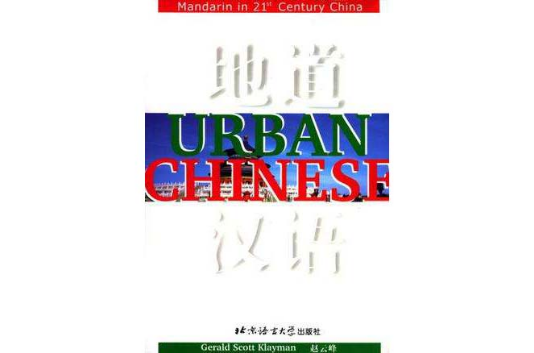《地道漢語》是一本龍傑瑞編制,由北京語言大學出版社在2002年出版的書籍。
基本介紹
- 頁數:357頁
- 出版社:北京語言大學出版社
- 裝幀:平裝
- 開本:16開
圖書信息,作者簡介,內容簡介,目錄,
圖書信息
出版社: 北京語言大學出版社; 第1版 (2002年8月1日)
平裝: 357頁
開本: 16開
ISBN: 7561910908
條形碼: 9787561910900
尺寸: 25.7 x 18.3 x 1.8 cm
重量: 540 g
作者簡介
作者:龍傑瑞(Klayman,G.S.) (美國)趙雲峰
GeraId Scott Klayman came to Beijing in the summer of 1998 to do an internship for an international consu1ting firm.Through his worlx he realized that China' s economy was full of potential, but that he needed to learn Chinese, as well as possess a deep understanding of the Chinese culture in order to efficiently operate in China's business environment. As a result he embarked on a sojourn that he thought would take six months, but lasted two and a half years. During this time he immersed himself into the Chinese culture, living and working with Chinese. Gerald also conducted research into the social, economic and political issues facing Beijing cabdrivers that became the basis for his Honors thesis.
內容簡介
Urban Chinese is broken down into five sections. The first section, Pinyin and Tones, provides the reader training wheels for learning Chinese. Based upon standard American English, the pinyin component will present similarities to which speakers of English can relate. The tones section will outline and explain the tones of Chinese, providing tips and practice exercises.
Section Two, Radicals, reveals the logic and meanings of the most commonly used radicals, the components that are mixed and matched like puzzle pieces to form Chinese characters.
The third section, Category Usage Dictiomory, provides the most frequently used words on topics such as the body, business, cabs and directions, colors, countries and country leaders, education, electronics, emotions and feelings, foods and restaurants, hobbies, holidays, language study, telling time, vehicles, weather and Chinese zodiac signs.
Learning the stories behind Chinese idioms is a great way of deepening your understanding of the Chinese culture while also expanding your vocabulary. In Section Four, Idioms, the background stories of 25 idioms are told along with an example sentence that will enable the student to use the idiom in public discourse.
Section Five, Slang, will provide the student with the."real" language that is not printed in textbooks, but is said as much as, if not more than, the material that is.Each entry has undergone a usage test. Only if a majority of the people questioned use the word, was it selected. Examples with the“Chinglish”formula are used to guarantee the student complete understanding and usage.
Lastly, throughout the book, there are backgrounds and words of some of China's most commonly referenced personages including Lei Feng, Da Shan, Norman Bethune, etc.,which will give the reader a basic understanding of why these persons are brought up today.
目錄
I Pinyn(拼音)
II Radicals(部首)
III Measure Words(量詞)
IV “Chinglish” Key
V Category Dictionary(分類詞典)
Hobbies(愛好)
Numbers(數字)
Time and Calendar(時間與日期)
Weather (天氣)
Family and Addressing People(家庭與稱呼)
Holidays(節日)
Chinese Zodiac(生肖)
Emotions(情感)
Human (A)
Body Parts(身體部位)
Colors(顏色)
Clothing(衣服)
Foods(食物)
Beverages (飲料)
Restaurants(餐館)
Vehicles(交通工具)
Cabs and Directions(計程車與問路)
Education(教育)
Electronics(電器)
Business(商務)
Countries(國家)
Country Leaders(國家元首)
Language Studies(語言學習)
VI Personages (人物)
Vll Idioms(成語)
Vlll Slang(俚語)

